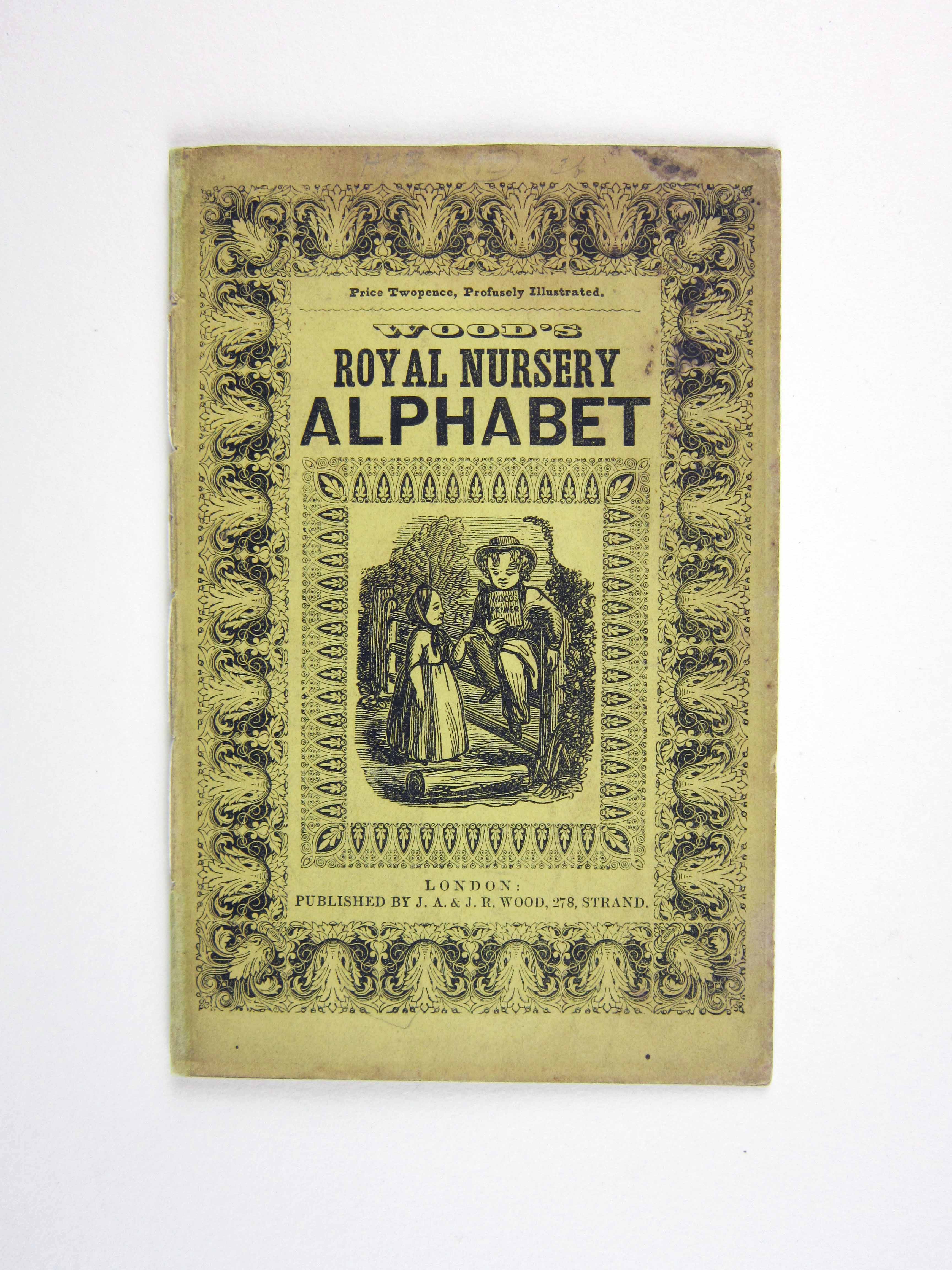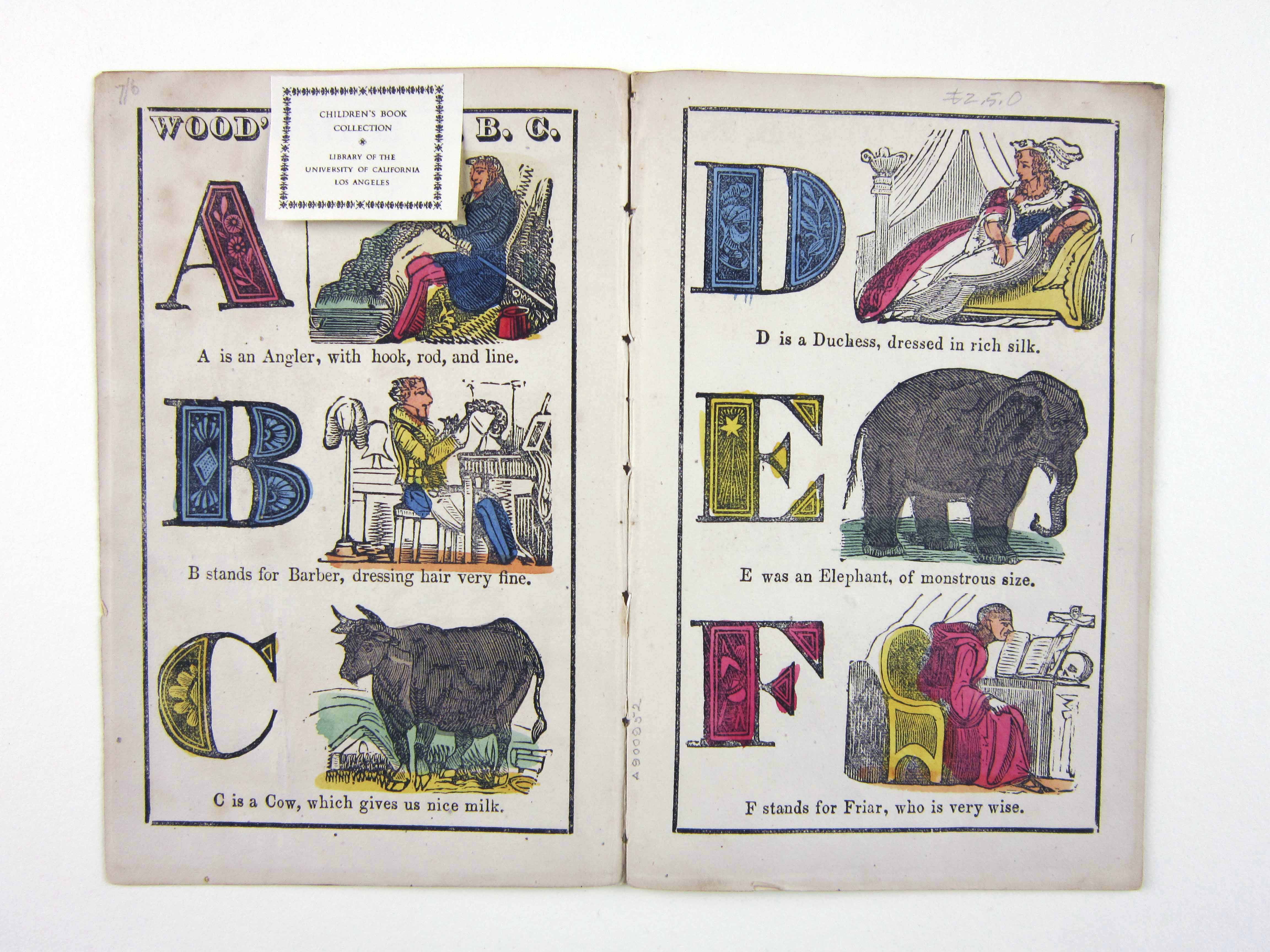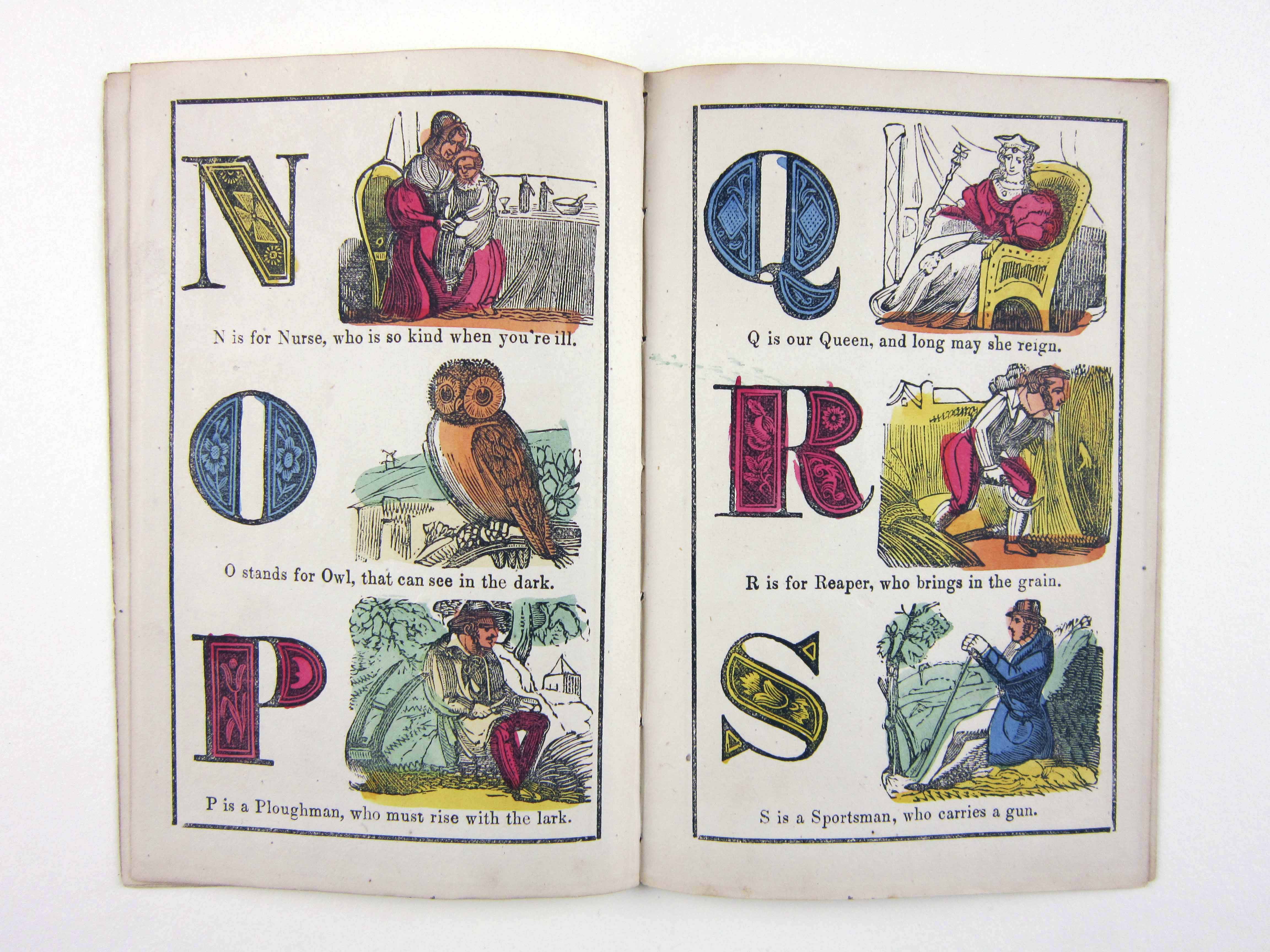

Alphabet books offer a vivid insight into the history of literacy and culture, as well as concepts of childhood. The Children's Book Collection at UCLA contains a rich array of these materials, some well-worn and much-used, some still bright and fresh. Each is a gem of print production and graphical imagery from another time and place. Though the history of alphabet books continues to the present, this exhibit focuses on the works in our collections published between 1700 and 1900, including horn books, primers, works of didacticism and seriousness, whimsy and play.
2. A Jumble ABC
3. A Little Pretty Pocket-Book
4. A New Lottery Book of Birds And Beasts
5. A Pretty Play-Thing for Children of All Denominations
8. ABC of Objects for Home And School
10. ABC with Pictures & Verses
12. Alphabet Et Instruction Pour Les Enfans
16. Dolly's ABC Book
17. Flora's ABC
18. Home ABC
22. Hornbook C. 1700
23. Large Letters for the Little Ones
24. Little ABC Book
25. Little People: An Alphabet
26. Martin's Nursery Battledoor
27. Mother Goose ABC
28. My Darling's ABC
29. Orbis Sensualium Pictus Quadrilinguis
30. People of All Nations: A Useful Toy for Girl Or Boy
31. Picture Alphabet
32. Pretty ABC
33. Railway ABC
34. Rusher's Reading Made Most Easy
38. The Alphabet of Old Friends
40. The Amusing Alphabet for Young Children Beginning To Read
42. The Child's Christian Education
45. The Easter Gift
47. The Favorite Alphabet for the Nursery
49. The Franklin Alphabet And Primer
51. The Golden ABC
55. The Moral And Entertaining Alphabet
57. The Old Testament Alphabet
59. The Picture Alphabet for Little Children
62. The Sunday ABC
63. The Union ABC
64. The Young Child's ABC, Or, First Book
65. Tom Thumb's Alphabet: Picture Baby-Books
67. Warne's Alphabet And Word Book: with Coloured Pictures
68. Wood's Royal Nursery Alphabet
Title Wood's Royal Nursery Alphabet



Brief description Idyllic wood-engraved and hand-colored illustrations that depict occupations, animals, and children.
Full description Wood's Royal Nursery Alphabet is a mid-nineteenth century children's alphabet book. Colored wood engravings of animals, occupations, and domestic scenes are followed by short rhymes. This Victorian Era alphabet book depicts an idyllic view of the world, while teaching young children to read simple rhymes and associate pictures with letters.
Literacy There are different levels of literacy in Wood's Royal Nursery Alphabet. The young child, who used Wood's Royal Nursery Alphabet, was taught the alphabet by associating each letter to an illustration of an animal, occupation, or domestic scene. The letters are large and border the illustration, guiding young children to make a connection between symbol and image. The second level of literacy presented in Wood's Royal Nursery Alphabet is higher than the basic instruction of the alphabet. The short sentences that follow each illustration combine the letter and the illustration in to a short rhyme. This level of literacy challenges the child to recognize the letter and to also read the rhyme that follows. Brightly colored illustrations, exotic animals, and finely dressed workers depict one of the many reasons for literacy: entertainment and pleasure. The child who used this book was exposed to a broad and idyllic world through reading. Literacy provided a route to entertainment, information on occupations, and pictures of fascinating animals from around the world. http://codexsinaiticus.org/en/
Childhood In Wood's Royal Nursery Alphabet the alphabet is displayed through brightly colored woodcut engravings of animals, occupations, and domestic scenes. The illustrations of exotic animals and finely dressed workers expose the reader to an idyllic view of the world. There are only two depictions of children in the alphabet book: a sick child being cared for by a kindly Nurse (N is for Nurse), and a boy who is studying to read (Y is for youth). There are no pictures of children at play, yet the tone of the book and the illustrations are lively and fun. Early readers would have used Wood's Royal Nursery Alphabet to learn how to associate the letters of the alphabet with the illustrated scenes of animals, occupations, and domesticity. Rhymes follow each picture and letter, and are appropriate for the more advanced child who is able to read.
Iconography The illustrations in Wood's Royal Nursery Alphabet taught children about occupations and animals. Domesticity and the harmonious existence of the family was the Victorian ideology of family life. Wood's Royal Nursery Alphabet depicts different occupations in an idealized way, to fit in to the idyllic view of family life. The Ploughman, the Reaper, and the Miller, are shown happily laboring in fashionable and clean clothing. This idealized depiction of the working class does not show that in reality, strenuous and difficult work was required of these laborers. As the title implies, royalty is depicted throughout the illustrations of the alphabet. The Duchess, the Knight, and the Queen are lavishly dressed and brightly colored. The rhyme, "Q is for our Queen, long may she reign," illustrates an idealized view of royalty. A harmonious relationship between the royalty and the people is assumed, and young readers are taught to admire and revere the established ruling class.
Production Wood's Royal Nursery Alphabet has no publishing date, but is estimated to be published in 1840. The publishing house is J.A. & J.R. Wood in London, England. Two additional children's books can be found on WorldCat that were published by J.A. & J.R. Wood: The Real Norwood Gipsy and Popular Dream Book and Wood's London Cries. The Real Norwood Gipsy and Popular Dream Book was published in 1840. Similar to Wood's Royal Nursery Alphabet, Wood's London Cries lacks a publishing date but is estimated to have been published between 1870 to 1890. Using these dates, J.A. & J.R. Wood was in business for a minimum of fifty years and published children's literature.*The illustrations are printed from woodblock and are hand colored. The pictures are detailed and bright, although limited to the basic primary colors. Because the illustrations were hand colored, each copy of Wood's Royal Nursery is unique.
Publisher J. A. & J. R.Wood
Publication place 278 Strand, London
Date 1840
UCLA Call Number CBC GR486 .W76 1840
Repository UCLA Charles E. Young Research Library, Dept. of Special Collections
Dimensions 19 cm
Technologies of production Color wood engravings